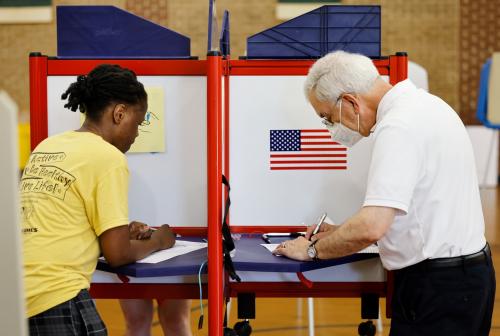Amid the perennial lament about partisan “gridlock” and “dysfunction” in Washington, a casual observer might conclude that the postures of the Democrats and Republicans are permanent fixtures. Year in and year out, the two sides, it is easy to infer, look hopelessly set in their ways.
But the inference is shortsighted. Repeatedly in American history, the leading political parties have changed their policy positions, sometimes startlingly. Consider these examples.
- During the earliest years of the republic, the so-called Republicans (not to be confused with today’s party bearing the same name) resisted practically every facet of the Federalist agenda, which featured a larger role for a central government as advocated by Alexander Hamilton. By 1815, however, the Republican Party had pivoted. Led by James Madison, it suddenly embraced just about every one of Hamilton’s main prescriptions.
- Born in 1854, another Republican party—the one built by Lincoln—became the champion of greater racial equality. It continued to enjoy that reputation well into the 20th century. As late as 1932, black voters were still casting the great majority of their ballots for the Republican presidential candidate. On the race issue, the Democrats were the reactionary party. That shameful distinction began to fade in the course of the 1930s and 1940s. By 1964 it was a Democratic president and his party’s large majorities in Congress that indisputably took the lead in advancing civil rights for blacks.
- From their inception, through roughly the first half of the 20th century, the Republicans were more protectionist than the Democrats. On those rare occasions when import duties were lowered, it was Democratic control of the legislative and executive branches that enabled tariffs to be liberalized. By the middle of the 20th century, this partisan divide over trade policy had diminished. Then, in the 1970s and 1980s, a difference re-emerged—but now with the roles reversed: Republicans had morphed into the more fervent free traders, while the Democrats, especially in Congress, grew agitated about allegedly “unfair” competition from the country’s trading partners.
- At the start of the 1970s, there was little appreciable daylight between the parties on so-called social or cultural questions; neither was especially preoccupied with them, nor voiced firm views. As the decade wore on, that consensus began to fall apart. Over the ensuing years, the Republican Party hardened its stance on one issue after another—abortion, gun control, gay marriage, and intermittently, immigration. Democrats mostly leaned in the opposite direction.
In this paper, Pietro Nivola closely examines cases of partisan repositioning and learns from them the circumstances that induce a party to alter its course. These various stories of party change offer some lessons for contemporary critics who await, often with considerable frustration, one party or the other to turn a new leaf.
Cases of an abrupt about-face are uncommon in U.S. politics. When they have occurred, typically the cause was a sudden, transformative blow to the status quo. Pearl Harbor offers the clearest illustration; it shattered American isolationism, not least for most Republican adherents.
Because events so jarring are not routine, the evolution of partisan positions ordinarily is a more sluggish process. The Democratic Party took ages to begin blazing the trail of civil rights in part because even the Great Depression and the New Deal—two big interruptions of business as usual—had not been able overnight to dislodge most black voters from their traditional fealty to the Republican Party. Unlike Madison’s re-delineation of party philosophy at the end of his presidency (a development that predated the formation of mass parties) partisan change in modern times is seldom simply the product of top-down decisions; core constituencies have to swing around—and that usually happens slowly. Like it or not, patience is required. Whatever a party’s posture at any given point in time, eventually it too will pass.



